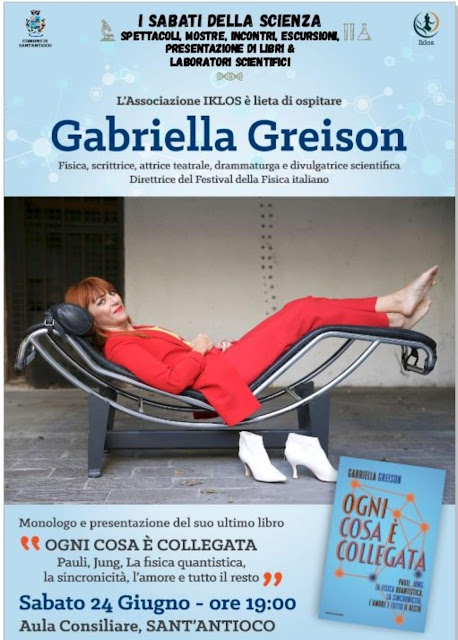Twitter, la scienza e un nuovo indicatore: the Twimpact factor (Could Twitter Influence Science?)
 Tritter può influenzare la scienza? O meglio le pubblicazioni scientifiche? O meglio ancora le citazioni delle pubblicazioni? Queste sono le domande che mi pongo dopo aver letto l'articolo di Haydn Shaughnessy pubblicato oggi nel sito della rivista Forbes: "How Could Twitter Influence Science (And Why Scientists Are on Board)".
Tritter può influenzare la scienza? O meglio le pubblicazioni scientifiche? O meglio ancora le citazioni delle pubblicazioni? Queste sono le domande che mi pongo dopo aver letto l'articolo di Haydn Shaughnessy pubblicato oggi nel sito della rivista Forbes: "How Could Twitter Influence Science (And Why Scientists Are on Board)". Shaughnessy a sua volta fa riferimento al paper di Gunther Eysenbach (ricercatore alla University Health Network) pubblicato dal Journal of Medical Internet Research dal titolo "Can Tweets Predict Citations? Metrics of Social Impact Based on Twitter and Correlation with Traditional Metrics of Scientific Impact" le cui conclusioni (riporto l'abstract più in basso) sono che la presenza nei social media può determinare un incremento delle citazioni e che un nuovo indicatore, denominato "twimpact factor" per misurare altri effetti della ricerca e l'impatto sulla percezione dei risultati delle ricerche da parte del pubblico in tempo reale.
Gli elementi salienti dell'articolo di Haydn Shaughnessy sono tre:
1) stiamo creando conoscenza in un modo nuovo, ma abbiamo una filosofia della scienza modellata in modalità di lavoro "pre-web": tendiamo ancora a pensare alla scienza e a ogni categoria del pensiero rigorosa come un oggetto che cresce dopo essere stato coltiviato collettivamente. Mi chiedo - scrive sempre Shaughnessy - se queste categorie di pensiero sono ancora valide;
2) la ricerca di Eysenbach può essere un utile indicatore dei cambiamenti nelle dinamiche che riguardano le pubblicazioni scientifiche, ma anche una lezione per la vasta comunità degli opinion leader che forse c'è ancora molto da capire nel modo in cui si forma la conoscenza;
3) per decenni sono stati importanti due fattori: la peer review e dove si pubblica; ma forse ciò è stato anche un freno per la scienza. Forse - è il pensiero di Shaughnessy - ora abbiamo bisogno di una nuova filosofia della conoscenza.
A questo punto ho più domande di prima, in merito alle possibili correlazioni fra i tweet e le pubblicazioni scientifiche (e loro citazioni).
Avrei bisogno di altri studi per poter dire di iniziare a capirci qualcosa. E forse non solo io.
Andrea Mameli www.linguaggiomacchina.it 15 gennaio 2011
Can Tweets Predict Citations? Metrics of Social Impact Based on Twitter and Correlation with Traditional Metrics of Scientific Impact
Abstract
Background: Citations in peer-reviewed articles and the impact factor are generally accepted measures of scientific impact. Web 2.0 tools such as Twitter, blogs or social bookmarking tools provide the possibility to construct innovative article-level or journal-level metrics to gauge impact and influence. However, the relationship of the these new metrics to traditional metrics such as citations is not known.
Objective: (1) To explore the feasibility of measuring social impact of and public attention to scholarly articles by analyzing buzz in social media, (2) to explore the dynamics, content, and timing of tweets relative to the publication of a scholarly article, and (3) to explore whether these metrics are sensitive and specific enough to predict highly cited articles.
Methods: Between July 2008 and November 2011, all tweets containing links to articles in the Journal of Medical Internet Research (JMIR) were mined. For a subset of 1573 tweets about 55 articles published between issues 3/2009 and 2/2010, different metrics of social media impact were calculated and compared against subsequent citation data from Scopus and Google Scholar 17 to 29 months later. A heuristic to predict the top-cited articles in each issue through tweet metrics was validated.
Results: A total of 4208 tweets cited 286 distinct JMIR articles. The distribution of tweets over the first 30 days after article publication followed a power law (Zipf, Bradford, or Pareto distribution), with most tweets sent on the day when an article was published (1458/3318, 43.94% of all tweets in a 60-day period) or on the following day (528/3318, 15.9%), followed by a rapid decay. The Pearson correlations between tweetations and citations were moderate and statistically significant, with correlation coefficients ranging from .42 to .72 for the log-transformed Google Scholar citations, but were less clear for Scopus citations and rank correlations. A linear multivariate model with time and tweets as significant predictors (P < .001) could explain 27% of the variation of citations. Highly tweeted articles were 11 times more likely to be highly cited than less-tweeted articles (9/12 or 75% of highly tweeted article were highly cited, while only 3/43 or 7% of less-tweeted articles were highly cited; rate ratio 0.75/0.07 = 10.75, 95% confidence interval, 3.4–33.6). Top-cited articles can be predicted from top-tweeted articles with 93% specificity and 75% sensitivity.
Conclusions: Tweets can predict highly cited articles within the first 3 days of article publication. Social media activity either increases citations or reflects the underlying qualities of the article that also predict citations, but the true use of these metrics is to measure the distinct concept of social impact. Social impact measures based on tweets are proposed to complement traditional citation metrics. The proposed twimpact factor may be a useful and timely metric to measure uptake of research findings and to filter research findings resonating with the public in real time.



Commenti